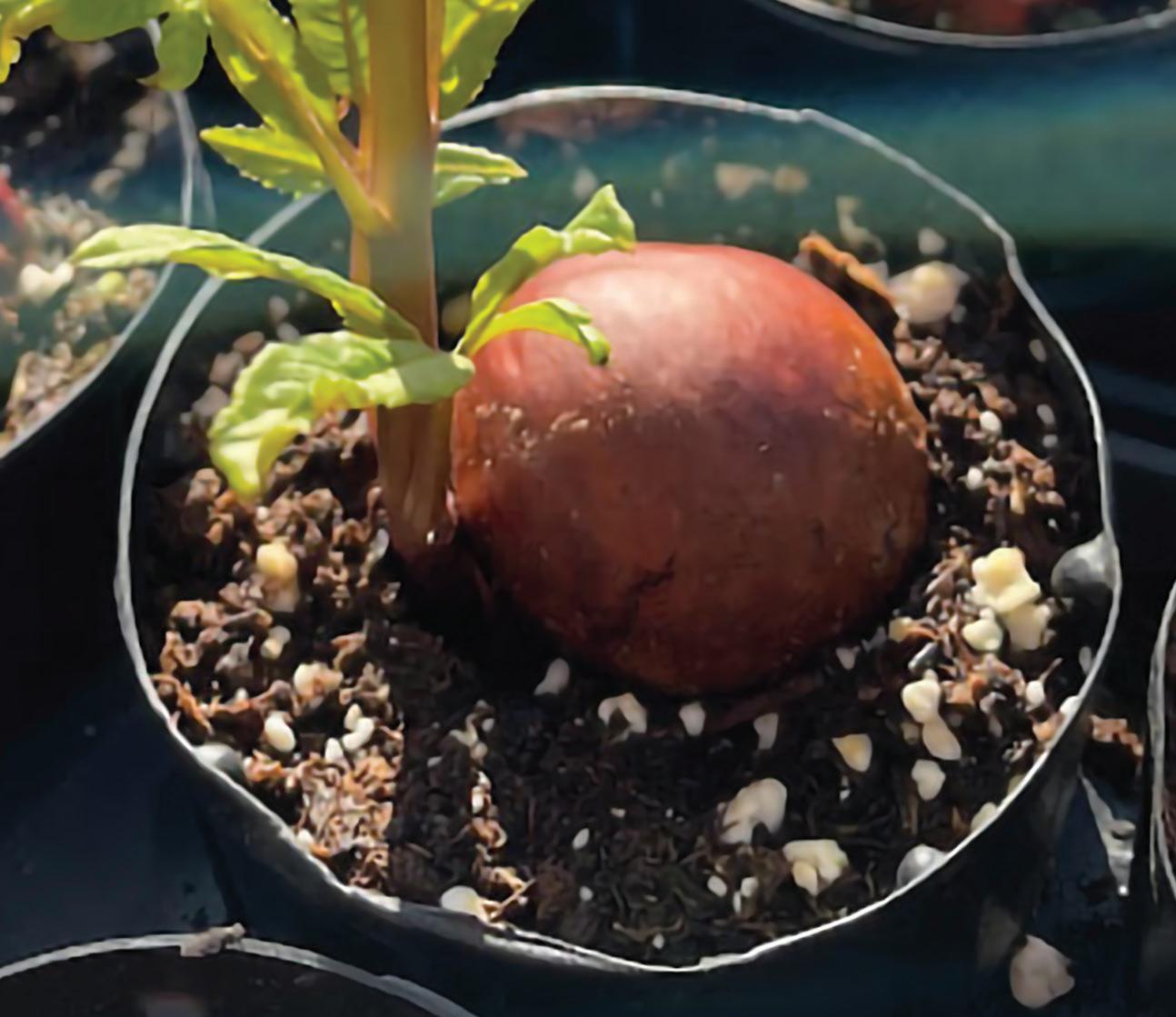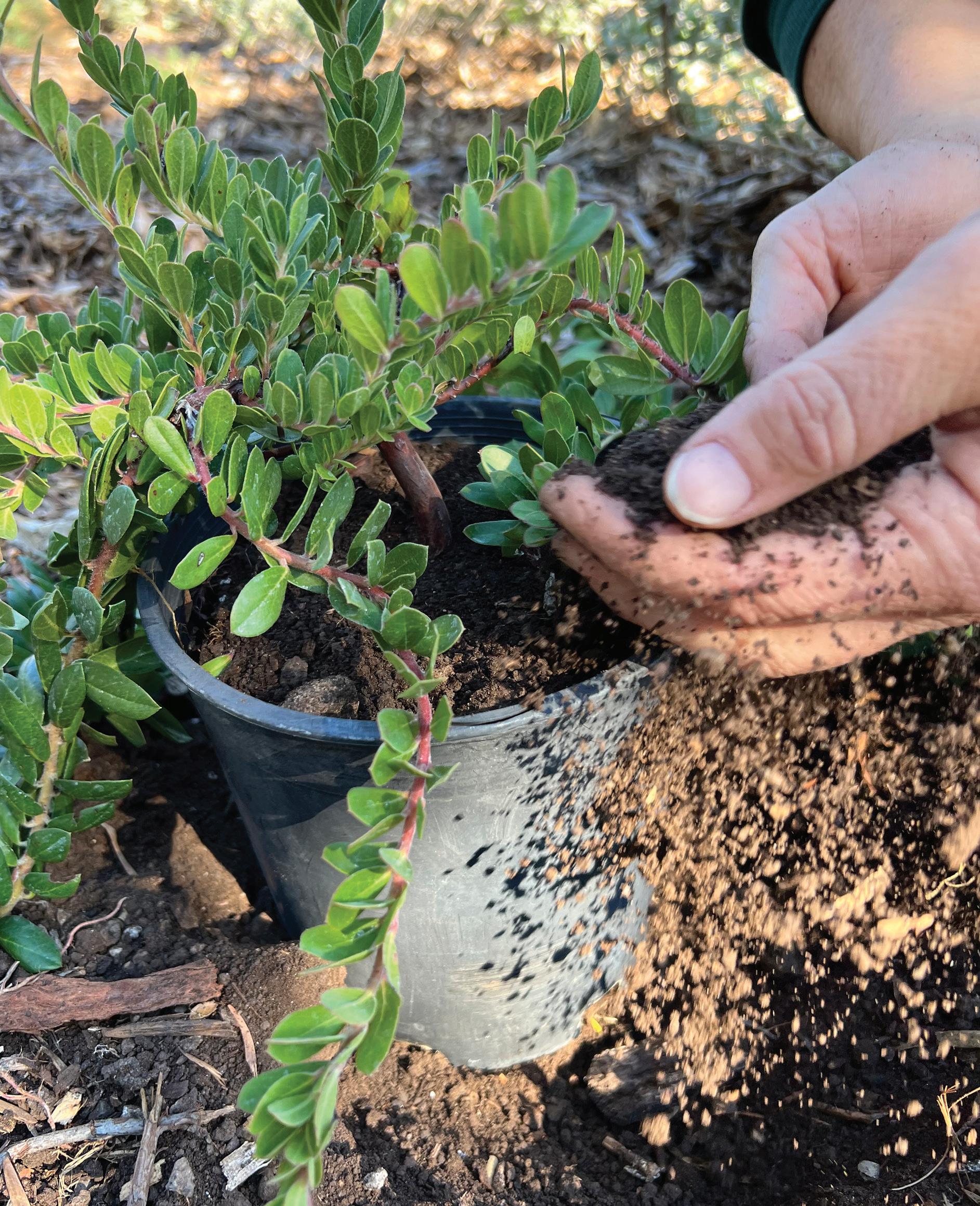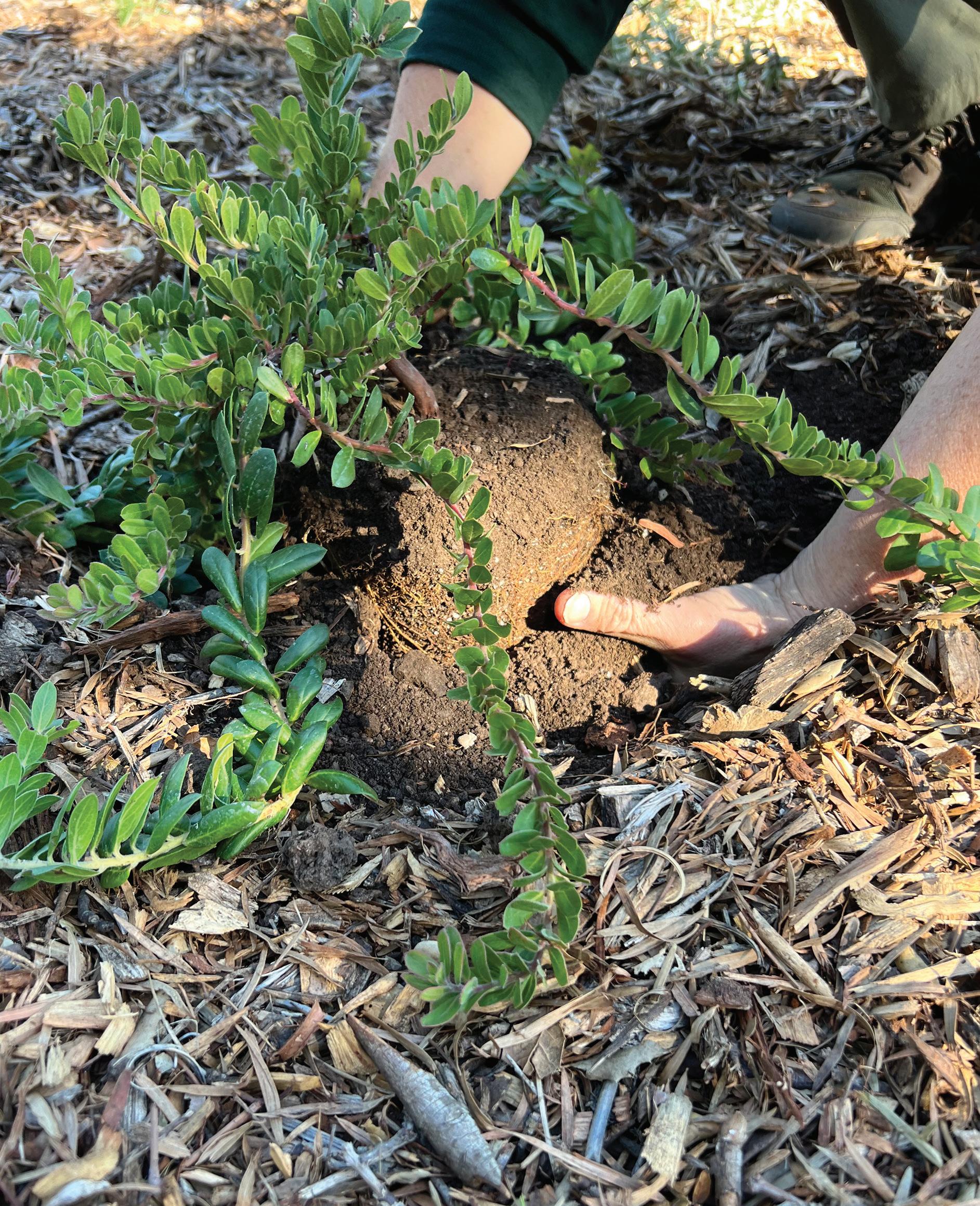
7 minute read
An Ode to Soil: My Journey With Dirt
By Stephanie Ranes, Grounds Manager
As a kid, I had the good fortune to spend my free time digging in the dirt. As a naturalist, educator, and gardener, I have spent many days in direct communion with the soils and related plant communities all across California (i.e., digging in the dirt). To me, the sign of time well spent is to go home at the end of the day with dirt stuck under my fingernails. And if I don’t have my hands in the earth, I’m enjoying it in some other way. In all the nights I’ve spent sleeping outside in the deserts, mountains, coasts, and hills of California, I’ve lain on top of a world teeming with life — an ecosystem in the ground which sustains and mirrors the complexity of ecosystems above ground. As Charles E. Kellogg of the U.S. Department of Agriculture said, “Essentially, all life depends upon the soil. … There can be no life without soil and no soil without life” (U.S. Department of Agriculture & Kellogg, 1938, 864).
What Is This ‘‘Soil’’?
I’ve delighted in fields of spring wildflowers, shaded oak (Quercus spp.) woodlands, and rare wildlife encounters, but I’ve never really thought about what contributed to this diversity of life I so enjoy. James M. Nardi quotes in his book that soil is “a dynamic natural medium in which plants grow made up of both mineral and organic materials as well as living forms” (Nardi, 2007, XIX). We can find hundreds more definitions or understandings of the term “soil.” For many people it is the same thing as “earth”: An intrinsic and fundamental aspect of life on the planet. The inorganic, mineral component of soil originates with the parent rock, like granite in the Sierra Nevada or sandstone and shale in Santa Barbara. This mineral component will impart soil texture — sand, silt, clay — as well as some macronutrients and micronutrients vital to plant health. In addition to inorganic elements, healthy soil is created by a teeming universe of organisms which have all kinds of life-sustaining functions. For instance, some bacteria called “rhizobia” help fix nitrogen from the air into a form usable by roots. Some fungi are helpful in recovering phosphorus from soil for plants. Decomposers such as earthworms help return nutrients from other organic material back into the soil. James estimates, “The number of creatures on a single acre of land far exceeds the entire human population of the world.” (Nardi, 2007, 26)

Mothering Your Dirt
In my lifelong process of becoming a gardener, I’m continually learning that in order to take care of a garden above ground, I need to also take care of it below ground. Some of the best ways to take care of soil are to protect and nurture it with a layer of mulch and compost. A mulch layer helps support biological activity, add nutrients, add organic material, and retain soil moisture — all of which help soil life and therefore plant life. Often the best mulch can be fallen leaves from trees overhead or any kind of organic material found locally. Homemade compost helps recycle food waste and add nutrients and microorganisms back into the garden soil. The continual practice of adding compost and mulch layers greatly benefits any soil just by creating a habitat for soil life to increase. Building healthy soil takes time, but it doesn’t have to be complicated. As Owen Dell, RLA, ASLA, and principal at Owen Dell and Associates says, “Leaves are called leaves for a reason. We’re supposed to leave them where they fall.”
Soil texture tests can help give information about soil conditions when necessary. Soil texture, such as the clay we have in Santa Barbara, can be a challenge for many plants not adapted to growing in a very fine–particle soil. I’ve learned that rather than forcing plants to adapt, choosing plants that can tolerate this soil type creates a healthier, more attractive garden and less work from the gardener. However, there are also times when it’s fun to experiment with different plants that may not like the soil conditions. In these cases, it is generally recommended to incorporate compost, either to the entire bed or into a specific planting area.
Soil nutrient tests are helpful in identifying any deficiencies or excesses of macronutrients and micronutrients in planting beds. As with soil texture issues, soil nutrient issues are best managed using an organic form of amendment or fertilizer to adjust nutrient levels. At Santa Barbara Botanic Garden, we use an organic feather meal (an organic, natural fertilizer derived from poultry feathers) in conjunction with compost to help add some nutrients to soils where plants appear to be deficient. California’s native plants generally do not need high levels of nutrients in the soil; therefore, an organic fertilizer, if one is needed at all, is usually the best way to slowly feed and improve deficient soils. While adding elements to soil can improve various deficiencies, sometimes leaving soil alone can also help. As much as possible, we at the Garden try to avoid walking in planting beds, especially when they are wet, to avoid compaction and to help keep soil properly aerated. Soils and the organisms that keep it healthy need to breathe! While tilling may be necessary on an agricultural scale, it can also disrupt soil structure, harm beneficial organisms, and increase erosion.

Dig In!
Getting to know and understand the soils we live with is a vital part of growing a beautiful garden, a healthy wildlife habitat, or a fruitful food forest. Take the time to get dirty: Dig holes and look closely for organisms, feel textures with bare hands, stick fingers into the ground to gauge moisture, and watch what develops just under a couple inches (or centimeters) of mulch. “It is apparent that no lifetime is long enough in which to explore the resources of a few square yards of ground.” (Coats, 1956, IX)
There are great resources available for more in-depth information about soil and how to work with it. Here are two of my favorites:
The California Native Plant Landscaper Certificate Program Student Handbook, built by the Theodore Payne Foundation, is available to all students of the Garden’s California Native Plant Landscaper Certification program. You can find out more by visiting our website.
The book “California Native Plants for the Garden” by Carol Bornstein, David Fross, and Bart O’Brien is a wonderful resource for every gardener and features more than 500 of the best native plants for home gardening.

CITATIONS
Coats, A. M. (1956). Flowers and Their Histories. Pitman Publishing Corporation. https://archive. org/details/flowerstheirhist0000alic/page/n5/mode/2up
Nardi, J. B. (2007). Life in the Soil: A Guide for Naturalists and Gardeners. The University of Chicago Press. https://dokumen.pub/qdownload/life-in-the-soil-a-guide-for-naturalists-andgardeners-9780226568539.html
U.S. Department of Agriculture & Kellogg, C. E. (1938). Soils & Men: Yearbook of Agriculture 1938. U.S. Dept. of Agriculture. https://archive.org/details/yoa1938/page/n3/mode/2up










